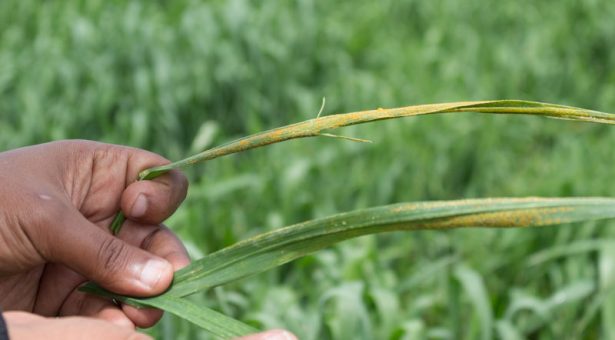
Scientists at the John Innes Centre and The Sainsbury Laboratory (TSL), along with partners at the International Center for Tropical Agriculture (CIAT) and elsewhere warn that we are not fully prepared to tackle the rise in new epidemics of plant diseases.
In an insight article published in Science, Dr Diane Saunders, Professor Sophien Kamoun (TSL) and colleagues propose a Global Surveillance System (GSS) that will extend and adapt established biosecurity practices and networking facilities.
As the paper notes; "To satisfy growing demand for food, global agricultural production must increase by 70% by 2050. However, pests and crop diseases put global food supplies at risk. Worldwide, yield losses caused by pests and diseases are estimated to average 21.5% in wheat, 30.0% in rice, 22.6% in maize, 17.2% in potato, and 21.4% in soybean; these crops account for half of the global human calorie intake.
"Though many national and regional plant protection organisations (NPPOs and RPPOs) work to monitor and contain crop disease outbreaks, many countries, particularly low-income countries, do not efficiently exchange information, delaying coordinated responses to prevent disease establishment and spread."
The Global Surveillance System aims to bring together the more than 180-member nations of the International Plant Protection Convention (IPPC), with a focus on countries that have high risk relative to ability to respond.
The system would prioritise six major food crops - maize, potato, cassava, rice, beans, and wheat - as well as other important food and cash crops that are traded across borders and would focus on tightening networks "active surveillance" and "passive surveillance" personnel who are on the front lines of disease outbreaks.
Active surveillance consists of labs at agriculture inspection stations, and customs and phytosanitary inspectors at borders and ports of entry. Despite their formal infrastructure, currently only an estimated 2-6% of cargo can be effectively screened.
The second group includes loose networks of farmers, extension workers with national agricultural organisations, scientists and agronomists at research centers and universities, and specialists in agriculture industries.
The Global Surveillance System would tap into cutting-edge technology for rapid disease diagnostics. One example is the new MARPLE (Mobile And Real-time PLant diEase) diagnostic kit developed by Dr Diane Saunders team in collaboration with CIMMYT and EIAR.
Dr Saunders said; "This new genomics-based MARPLE diagnostics method offers the potential for rapid diagnostics and surveillance for complex fungal pathogens to truly become accessible to researchers in the field, while cutting identification waits from typically months to a matter of hours. This development will enable increased surveillance of crop disease pressure and more targeted methods of control."
The Global Surveillance System would also take advantage of communication networks, including social media, to rapidly share information.
"A lot of collaboration and discussion is needed to improve existing systems, so we can avoid outbreaks that could negatively impact food security and trade" notes Mónica Carvajal, a researcher at CIAT and lead author.
- The full paper 'A global surveillance system for crop diseases' is published in Science
The authors acknowledge support from the Rockefeller Foundation, BBSRC, Gatsby charitable Foundation, BASF Plant Science, GIZ and thank Adriana G. Moreira from the IPPC Secretariat and FAO/UN.






